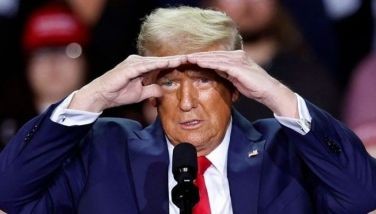Don’t fight the Fed
Global stock markets reversed course after the US Federal Reserve gifted them with a simultaneous 50 basis-point cuts in both the discount rate and the fed funds rate. It felt like Christmas in September after two months of weary and nervous trading sparked by the subprime mortgage crisis. Our own PSE gained five percent in two days following the Fed funds rate cut.
Identifying the catalyst
At the onset of the major market decline in July 2007, we started looking back at past historical performance of the stock markets after every major crisis. We summarized these events and presented the relevant data in a table in a previous article. We then concluded that the US Federal Reserve will be the single most important catalyst in the ensuing crisis.
Realizing this fact, we had written about the US Federal Reserve and the possible interest rate cuts in three of our articles for the past month. In our Philequity Corner article, “Global Stock Market Meltdown” (
Our article on August 27 (“Knowing What Hit Us”) was our way of educating the public on key concepts involving the current market events. We highlighted the role of the Federal Reserve. We defined the discount rate, the fed fund rate and how these affect the stock market.
Last week, our article “Patience is a Virtue” took note how central banks around the world switched their policy stance towards the easing side. We then highlighted how a string of past Fed easing cycles became definitive actions that addressed and resolved turbulence in the markets.
If you wish to review these and our other past articles, you can visit www.philequity.net and www.yehey.com/finance/opinion where Philequity Corner articles are archived.
The Fed is like referees in a basketball game
Realizing how potent the Fed and the central banks are in resolving the economic crises, Philequity Fund stayed the course notwithstanding the bearish technical signals and the deteriorating economic fundamentals in the
From our experience in trading currencies, bonds and equities, we have learned one valuable lesson. Prudence dictates that we don’t fight the central policymakers. It was a matter of time that the central banks will prevail. They will continue plodding until the evils besetting the
The Fed’s opening act
There are still those who believe that the recent Fed’s moves will never be adequate in addressing the prevailing economic and market concerns. There are also those who feel that this move will stoke inflation and bring down the dollar. But what they fail to see is that the Fed is just setting some things in motion, an opening act so to speak. It is an initial move to avert a recession. To quote the Fed, “(the rate cut) is intended to help forestall some of the adverse effects on the broader economy that might otherwise arise from the disruptions in financial markets and to promote moderate growth over time.”
By this, we think that more moves are forthcoming from the Fed especially those pertaining to inflation and the
Our reading is that the Fed will not hesitate to intervene again and use the monetary tools at its disposal when there is a need to avert an economic crisis or recession. In turn, these moves could eventually calm the raw nerves in the financial markets.
The policymakers will prevail
In the present context, we believe that the Fed will most likely continue cutting rates if the
We are not saying that the recent rate cut will be adequate to summarily solve the current mess in the
In the case of the
For comments and inquiries, you can email us at [email protected] or [email protected]. You can also visit our website www.philequity.net for more information about Philequity mutual funds.
- Latest
- Trending




























